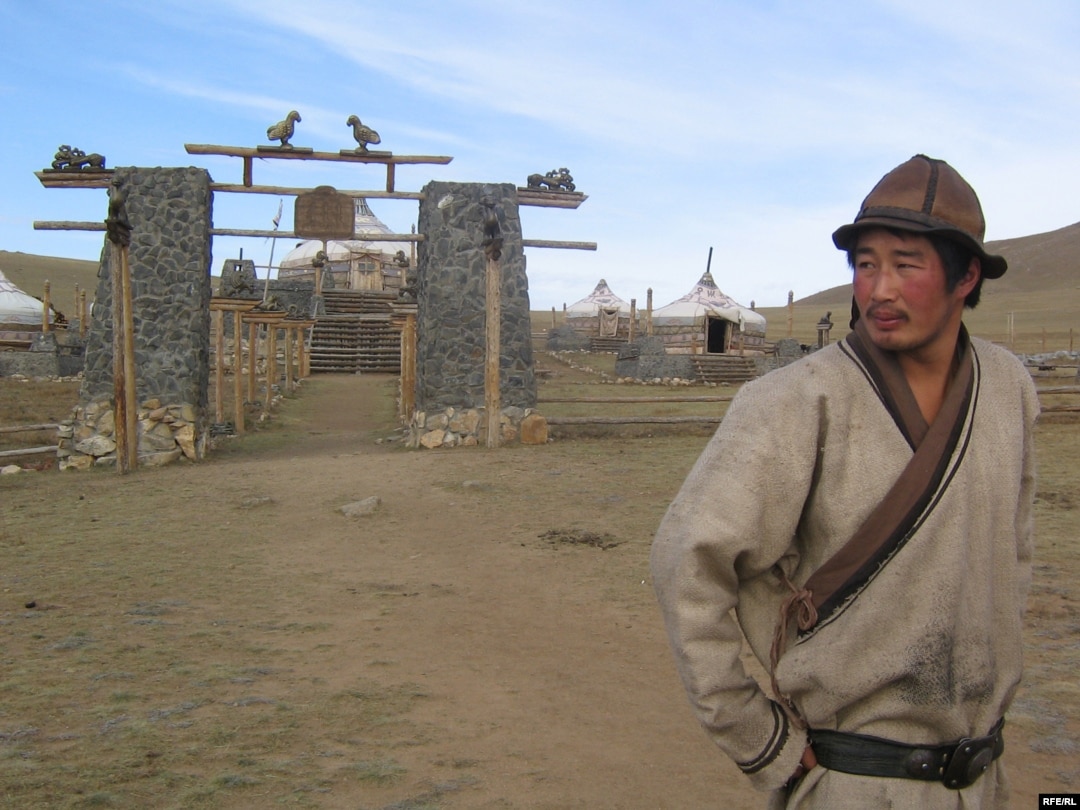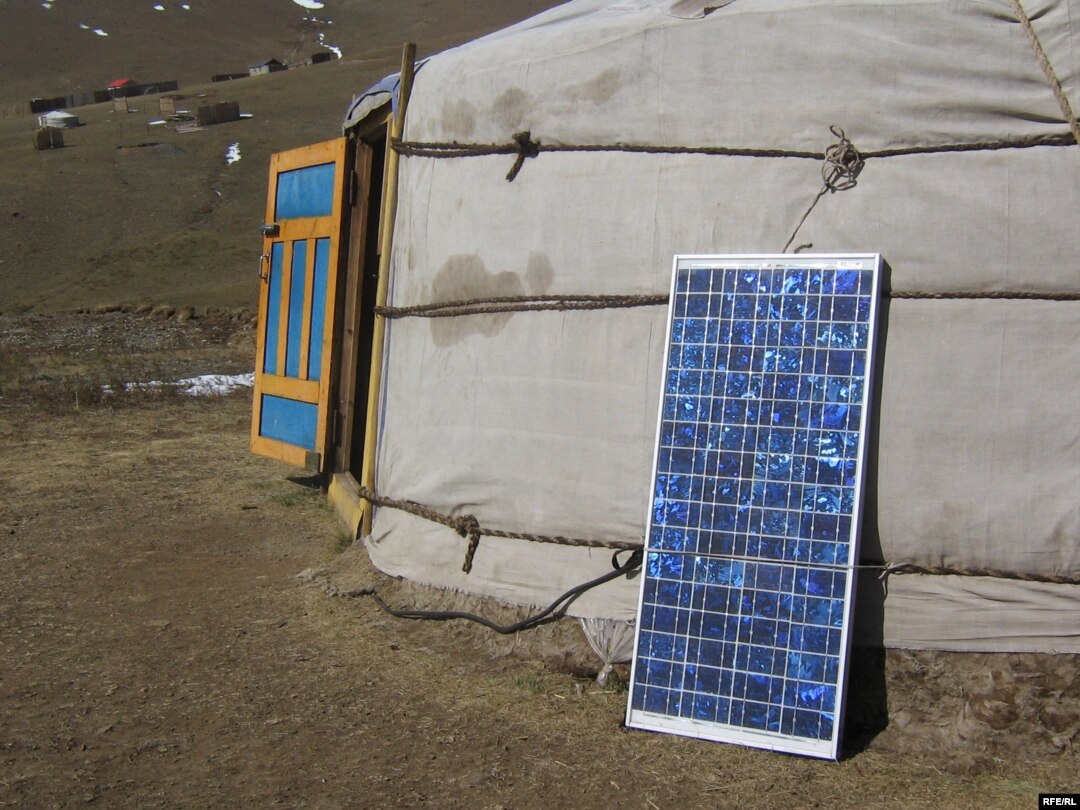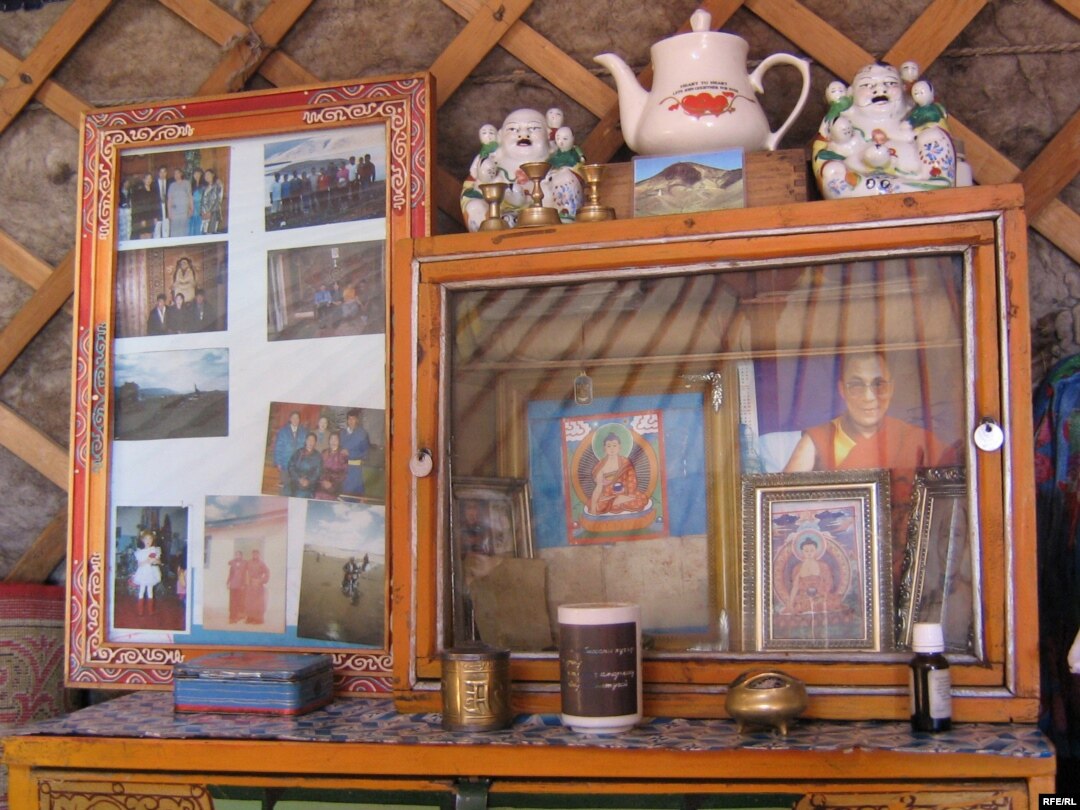Mongolia -- Land Of Milk & Mutton

A Mongolian tour guide dressed in traditional costume. - Mongolia has sought to build up its tourism industry in the 20 years since it abandoned communism and switched to a market economy. This has led to a proliferation of so-called "tourist camps," where foreign visitors can sleep in yurts, tour the countryside on horse- and camelback, and watch modern-day Mongolian warriors re-enact traditional battles.

A solar panel rests outside a felt ger, or yurt, outside the Mongolian capital, Ulan Bator. - Something old, something new. Mongolian nomads have lived for centuries in gers, the felt tents that are easy to dismantle and transport when it's time for a family to move its herds to a new pasture. But modern times are creeping into the old way of life -- many gers have solar panels as a cheap and easy way to generate power for radios, mobile phones, and even televisions.

A family shrine in a Mongolian ger. - Mongolian nomads keep possessions to a minimum, but every ger includes a small, brightly colored shrine that mixes family photographs with prayer wheels, incense burners, and Buddhist figurines. Life in gers is conducted according to standard rules and traditions. First-time visitors must enter to the left, and only move within the ger in a clockwise direction. Family elders and respected visitors occupy the right side of the ger.
Bowls of vodka, kumiss, and khimiin arkhi, or "milk vodka." - The start of a great evening: Russian vodka; kumiss, the sour, mildly alcoholic drink made from fermented mare's milk, and khimiin arkhi, a mellow, vodka-like drink distilled from milk. Khimiin arkhi is light but potent: Russians living in communist Mongolia called it "khitraya vodka," or "tricky vodka," for its tendency to sneak up on you. Mongolians will often serve alcoholic drinks from a single copper bowl, passed around the table -- a strategy that allows guests to discreetly down as little or as much as they need.
A bowl of bread and aruul, or dried cheese curds. - No Mongolian home is complete without a bowl of aruul on the table. The tough, sour blocks of curd -- made from cow, yak, or camel milk and slowly dried in the sun -- can be an acquired taste for outsiders. But they are vitamin-rich, long-lasting, and easy to carry -- an essential food for nomads who spend long days outside with no other source of nourishment.
A woman selling homemade pickles in an Ulan Bator market. - Mongolians have picked up a few culinary preferences from neighboring Russia over the years, including a taste for sour homemade pickles. Numerous women at markets can be spotted wearing cabbage leaves on their heads, which are believed to relieve headaches caused by high blood pressure.
An open-air market in the Mongolian capital, Ulan Bator. - Mongolians are dedicated meat-and-dairy eaters, but occasionally let a few vegetables onto their plate. Many of the vegetables sold at markets are imported from China, although some are locally grown. A kilo of potatoes can sell for 700 tugrik, or 50 U.S. cents.
A sheep sale under way in a suburban district of Ulan Bator. - Mongolia has more sheep than people. Sheep are valued for their wool, milk, meat, and even their bones. A large, healthy sheep -- judged by the plumpness under their tail -- can sell for 55,000 tugrik, or approximately $38.
A sheep is killed and butchered on the outskirts of Ulan Bator. - A single sheep can feed a family of four for a month in Mongolia. Residents of Ulan Bator will drive to the city outskirts, where streetside vendors offer one-stop shopping for people looking to buy and butcher a sheep. Mongolians have a deep respect for animals, and typically kill sheep not by slitting their throats but by making a small incision in their chest and gently squeezing the pulmonary veins until the sheep collapses, usually without a struggle.
Brainteaser, Mongolian-style. A puzzle crafted from sheep bones. - Mongolians have a vast array of games and mind-bending puzzles, all presumably designed with the aim of whiling away long winter nights on the steppe. Many of the games are crafted from sheep bones -- particularly ankle bones, which are tossed, dice-like, or laced onto a string for puzzles like these. (Photographs by Daisy Sindelar)

